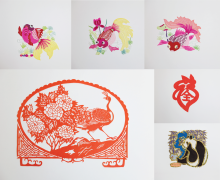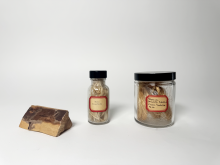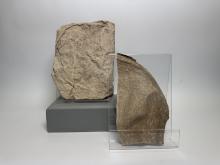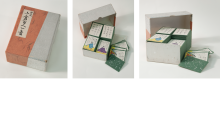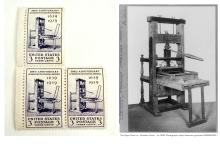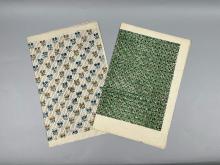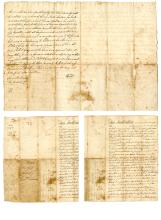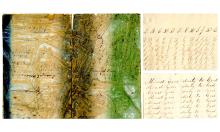Chinese paper-cutting, known as jianzhi, is one of the oldest folk-arts from China and is a UNESCO Intangible Cultural Heritage of Humanity. The art involves cutting patterns into paper using scissors or small blades. Paper cuts have historically been used as stencils for embroidery, templates for dying clothes with indigo prints, and to decorate walls, windows, and clothing.
The artifact of the month for July are three samples of fibers that are part of the Fiber Identification Library: Engelmann Spruce, Kozo, and Abaca.
Fibers
The artifact of the month for May is two pieces (2019.06.216a and 2019.06.216b) of experimentation with paper armor created by Douglass Morse Howell. This piece was donated by Alexandra Soteriou and collected while she was a studio assistant for Douglass Morse Howell in the late 1970s and early 1980s. It showcases his experimentation with flax and linen papermaking strength to try to make it as durable as armor.
The artifact of the month for March is the Hyakunin Isshu Special Selection / no.1215 set of Karuta handcrafted by Satoshi Tamura from the Tamura Shogundo studio in Kyoto, Japan.
Satoshi Tamura and the Karuta Studio, Tamura Shogundo
This month’s object is a new museum acquisition: paper samples from Bosques del Papel in Peru. The museum collects sample books and swatches like these to document the wide varieties of paper made around the world. These sample books are resources for historians and artists to be able to see first-hand the kinds of papers available and used in different places and times.
This month’s Artifact of the Month is a penmanship copybook from the 19th century (#1993.006.50). The covers are a single sheet of paste paper with a pattern of men in boats in the background, while in the bottom third of the sheet there are soldiers with rifles and a cannon. This whole scene, however, is dominated by the hooves and body of a saddled horse in profile along with the leg of its rider. The owner of the copybook, Emanuel Fiddler, wrote his name on both covers.

